If you are traveling to Lviv, you are probably also wondering what you can visit near the city. To see one more destination, learn more about Ukraine and get new experience, we offer you a one-day trip to Zhovkva.
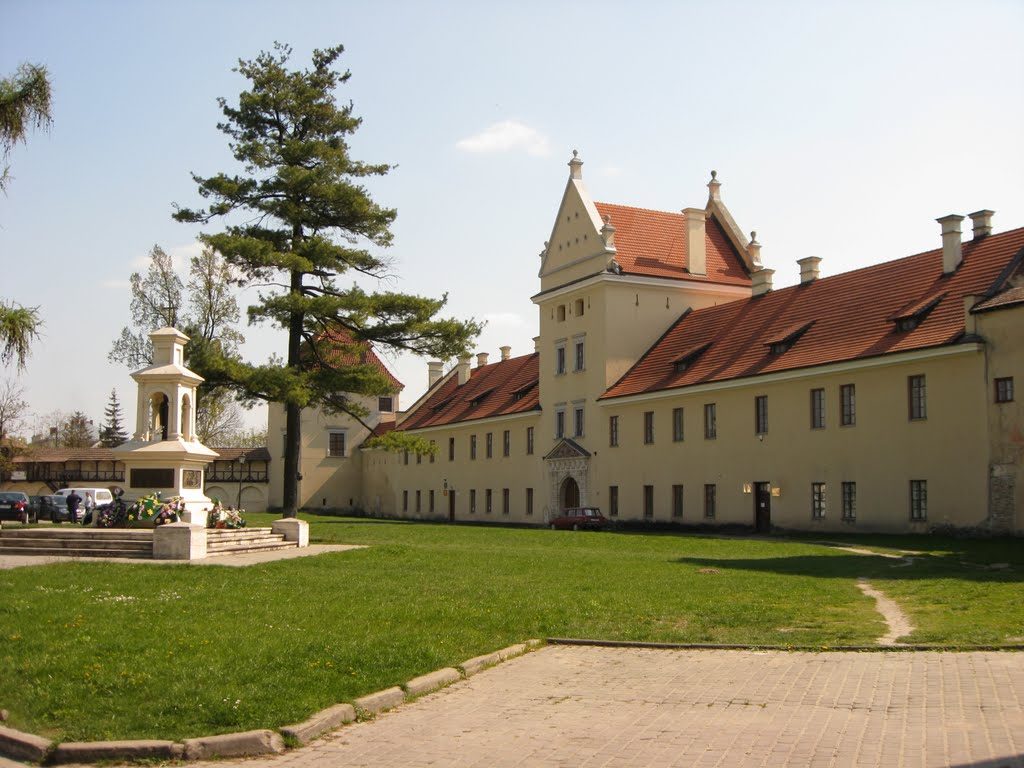
Zhovkva castle
Zhovkva – a perfect destination for a 1-day trip
Zhovkva is one of the most popular destinations for 1-day tours from Lviv. This small city (about 13,000 population) impresses with its Medieval atmosphere.
You can see Zhovkva on our tours in the Lviv region.
- Zhovkva, the former residence of the King of the Commonwealth Jan III Sobieski, is the only city in Ukraine that has “royal” status;
- In terms of the number of historical, architectural, and religious monuments, Zhovkva surpasses all other towns in the Galician region and is second only to Lviv;
- Minimum financial and time expenses, because Zhovkva is only 30 km away from Lviv and you can reach it by bus in 30-40 minutes.
And if you have enough time, you can visit the famous Krekhiv Monastery, located just 15 km from Zhovkva.

Brief History of Zhovkva
The founder of Zhovkva is the Polish Hetman Stanislaw Zholkewski, who acquired this land north of Lviv for his successful campaigns against the Turks and Mongols in the late 16th century.
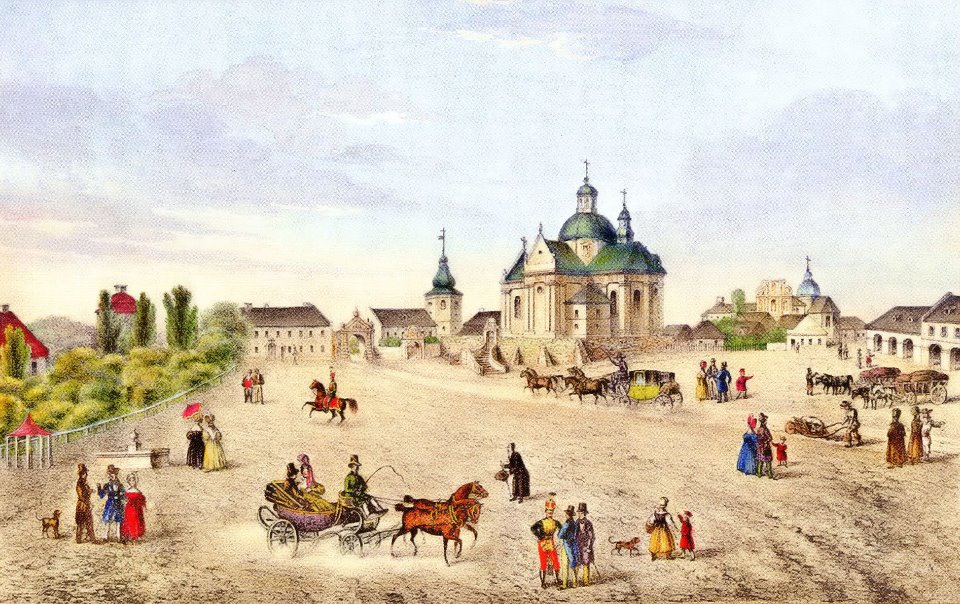
Zhovkva is considered to be an example of the “ideal city” of the Renaissance – beautiful and practical at the same time, adapted to peace and war: with wide straight streets converging on the central square; with temples located near the city walls, so that in case of enemy siege, they could become additional defensive towers. For the construction of the castle and the church of St. Lawrence, Zholkevsky invited the most famous architects of the time – Pavlo Shchastlyvyi, Anbrozii Prykhylnyi, Paolo Dominici Romanus.
According to legends, around the castle, Zholkevsky’s wife arranged a garden of incredible beauty, which has not survived to this day. The next owners of the castle also used the services of European masters and gradually the building became a luxurious palace.
It should be noted that we have a section with tours to other castles.

The has reached outstanding prosperity during the reign of Polish King Jan Sobieski, who made Zhovkva Castle his residence in 1675. It was here that the king received ambassadors from the Pope and the Holy Roman Empire and later celebrated the victory over the Turks near Vienna. 17th century is considered “golden” in the history of Zhovkva.
At the beginning of the 18th century, Zhovkva was still at the center of political events. In order to develop a joint strategy with the Polish-Lithuanian Commonwealth against the Swedes, Russian Tsar Peter I visited it. Ukrainian Hetman Ivan Mazepa soon arrived for talks. But after finding out the true intentions of Peter I regarding the future of Ukrainian autonomy, Mazepa joined the side of the Swedish king.
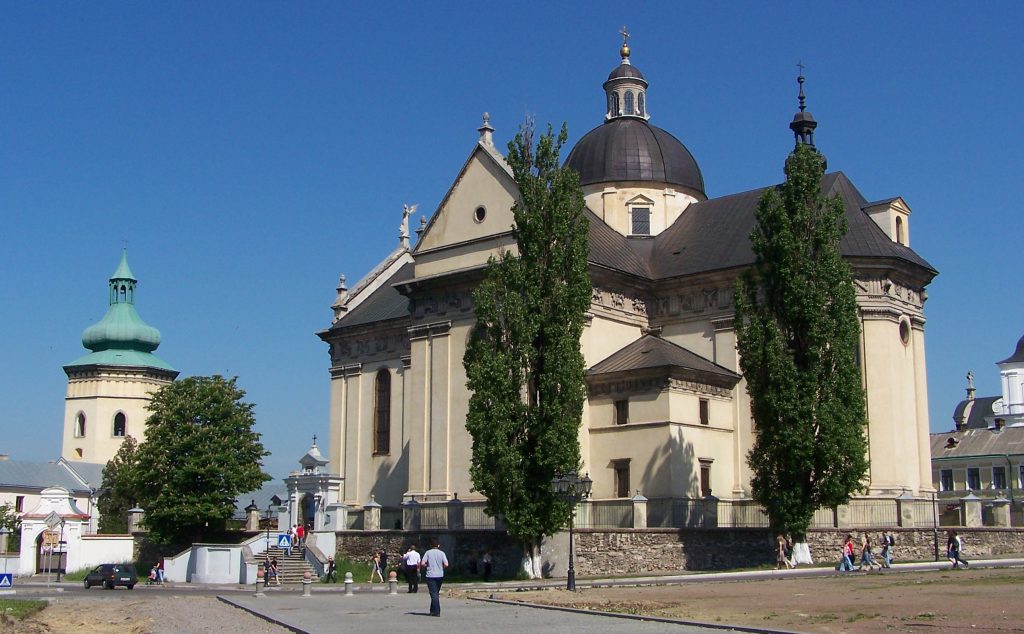
But in a few decades, Zhovkva ceased to play a significant role in the political life of the country and became a typical provincial town. The castle passed from one owner to another and gradually decayed. From the middle of the 19th century. and before the First World War, the castle housed a gymnasium and a municipality. The castle was destroyed during the war and restored by the Poles only in 1935, but a new war intervened. During the Second World War, it was occupied alternately by the NKVD and the Gestapo, and later the buildings were turned into residential facilities.
In 1951, the city was renamed Nester, as a tribute to the memory of the pilot who made the first air ram in Zhovkva. In Soviet times, no one paid attention to historical buildings and the development of the tourism industry. In fact, the only achievement of this period was the completion in 1971-1972 of the restoration begun by the Poles.
After Ukraine gained independence, Zhovkva Castle and its unique architectural heritage have been gradually being restored, and in 1992 the city got its real name back.
Zhovkva sightseeing
Zhovkva is located in one of the most picturesque corners of Lviv region. Against the background of the high hills of Roztochche, you can see fortress towers and high domes with bell towers of churches and chapels. The city is quite compact: if you turn from the main road to the city, to Lvivska Street, in a few minutes you will arrive to the central Market (Vicheva) Square, on the way to which you can see the wooden Trinity Church (1720, listed as World UNESCO Heritage), and a couple of relatively new churches – the Church of St. Lazarus (1893) and Petropavlovsk (1991-1993). And after a few hundred meters the street overlooks the central square, which looks too big for such a town.
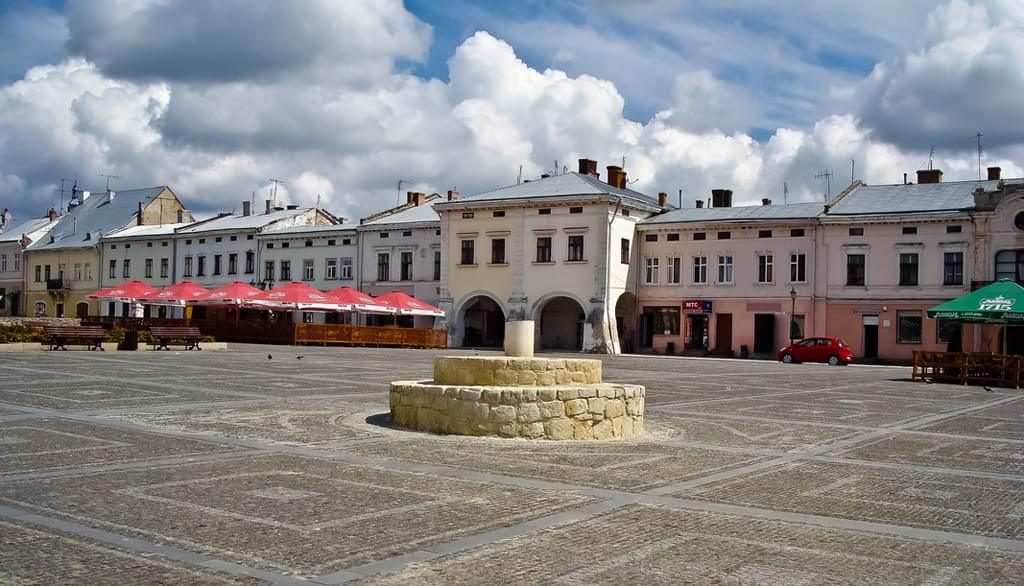
Along the perimeter of the square, there are all the major historical monuments, forming a unique architectural ensemble. Zhovkva Royal Castle is at its center. On both sides of the castle, the square is adjoined by high defensive walls with casemates and wooden battle galleries and two city gates – Zvirynetska and Hlynska (late 16th – early 17th centuries), and the second gate was dismantled by Soviet troops in 1964, as it became obstructing the passage of military equipment. Now we see only a copy of it.
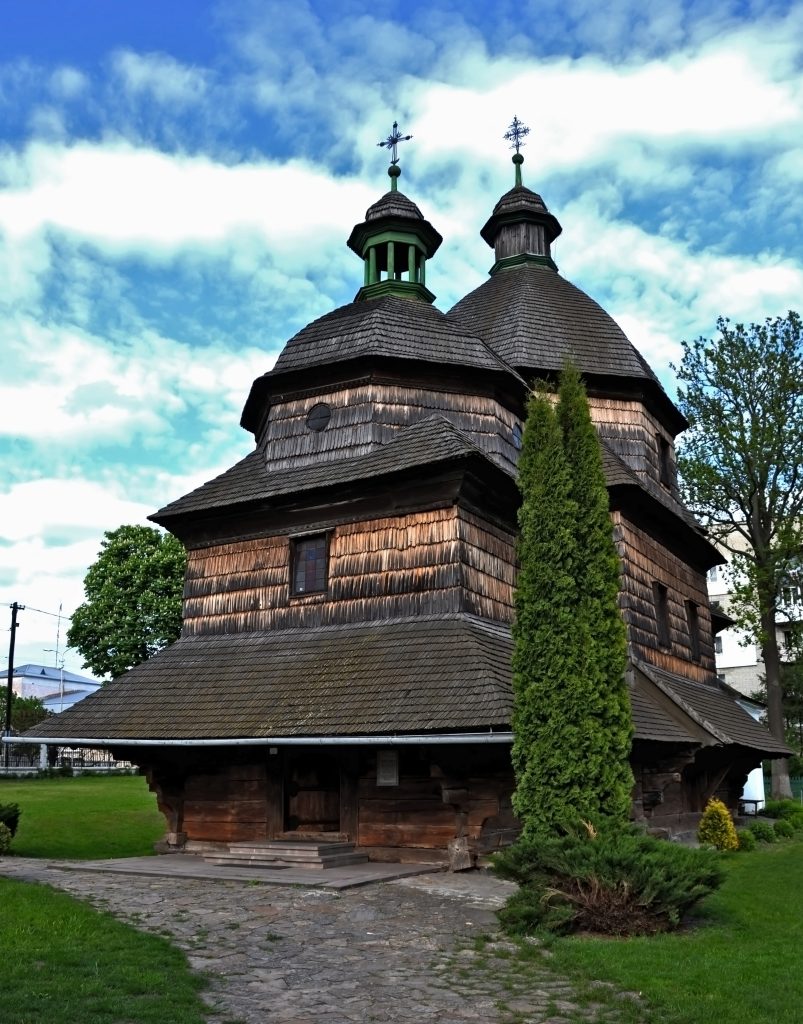
The town hall, built in 1932 by architect Bronislav Viktor (the previous building has not survived), looks especially delicate in the spring, surrounded by flowering chestnut trees. In total, about 40 objects of national importance are concentrated in the central part of the city, and in the whole of Zhovkva – 80. Almost all of them have been completely or partially preserved unchanged since the 17th century.
Monasteries and churches of Zhovkva
Next to the main facade of the castle, there is the Roman Catholic Church of St. Lawrence (1606-1618), one of the best architectural Renaissance buildings in Ukraine. It was in this church that King Jan Sobieski was awarded the Order of the Holy Spirit, a consecrated sword and hat from King Louis 14th, and Queen Maria Casimir was awarded the Golden Rose by Pope Innocent XI. Due to the large number and significance of the burials of prominent Polish figures, including the Sobieski and Zholkiewski families, the church was named “Little Wawel”, and its sloping bell tower – “Little Leaning Tower of Pisa”.
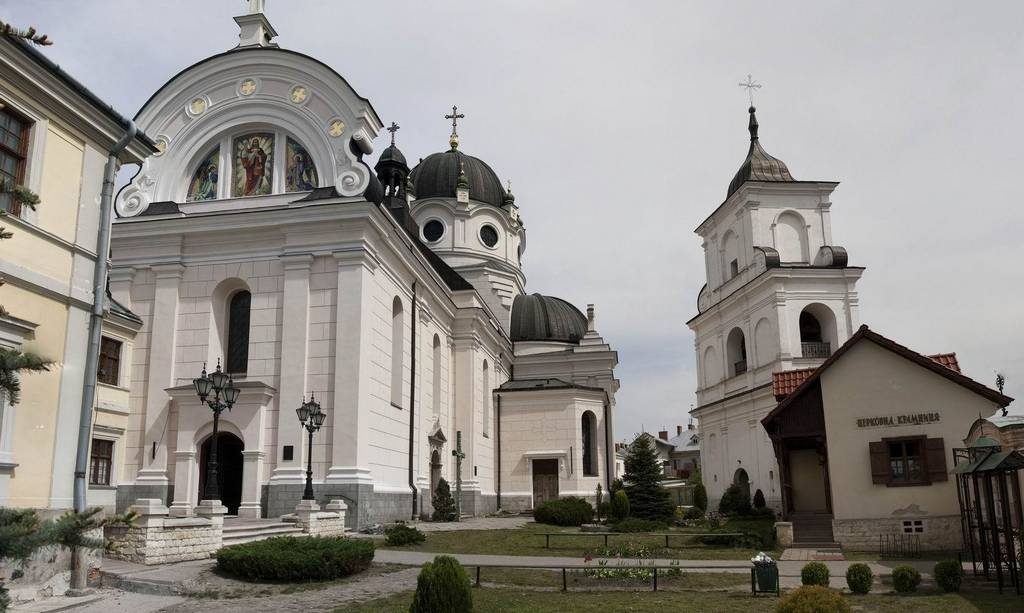
The complex of the Basilian Monastery and the Church of the Sacred Heart of Christ (1612) is very popular with tourists, and there are two reasons for that. First, the Basilian Church is known for its paintings by Julian Butsmaniuk, perfect and deeply Ukrainian in spirit and form.
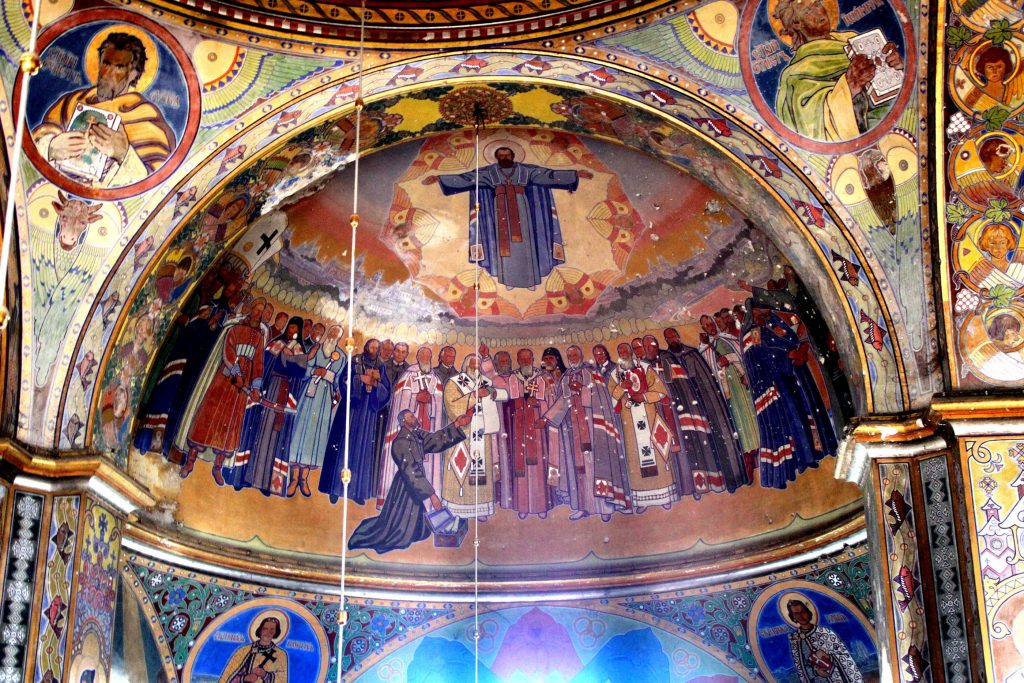
Butsmanyuk, a student of the famous artist Modest Sosenko, was a sincere patriot, in his paintings, you can see along with biblical heroes of famous historical figures of the era of national liberation struggles. And they are all depicted in traditional embroidered clothing. Currently, Zhovkva’s paintings and a pair of icons in the Lviv Museum are Butsmanyuk’s only artistic heritage in Ukraine.
Secondly, the relics of St. Parthenius have been in the church of the Basilian monastery since 1784. During his life, Parthenius held high positions in the Roman administration, and at the same time actively spread Christianity, for which he was executed at a very young age. Now many pilgrims go to Zhovkva to heal with the help of St. Parthenius and restore mental balance.
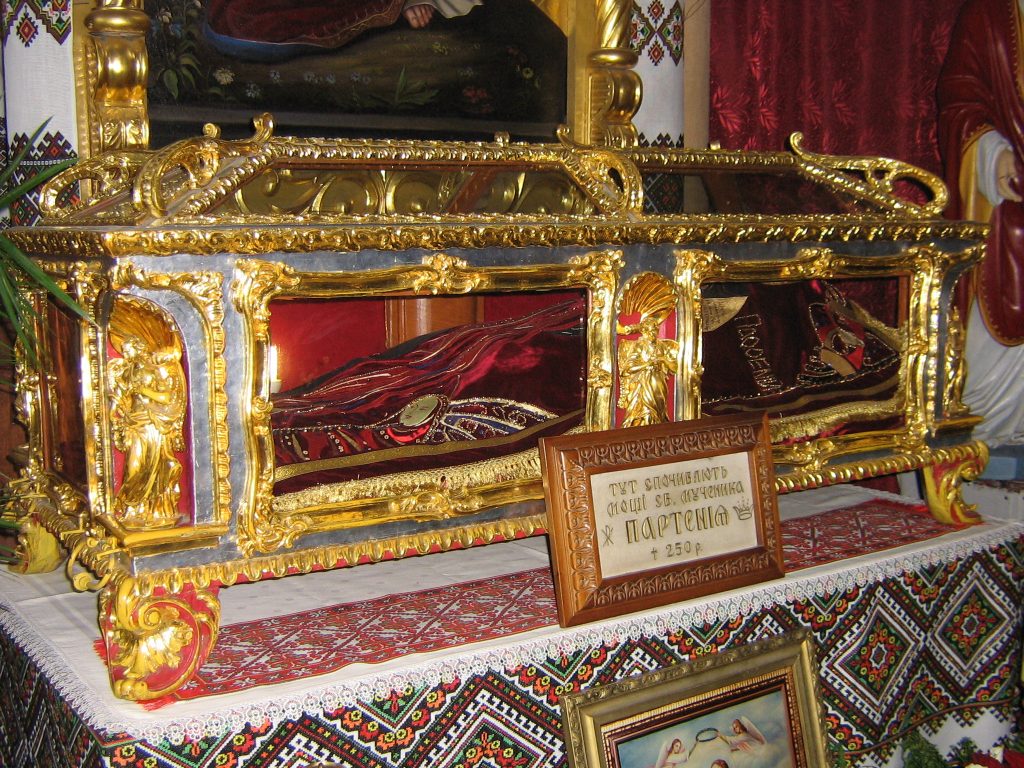
An interesting sacred monument is the brick synagogue, built in the form of a fortress, with small guard towers. Many synagogues in Tel Aviv are built using the Zhovkva synagogue as a model of Zhovkva.
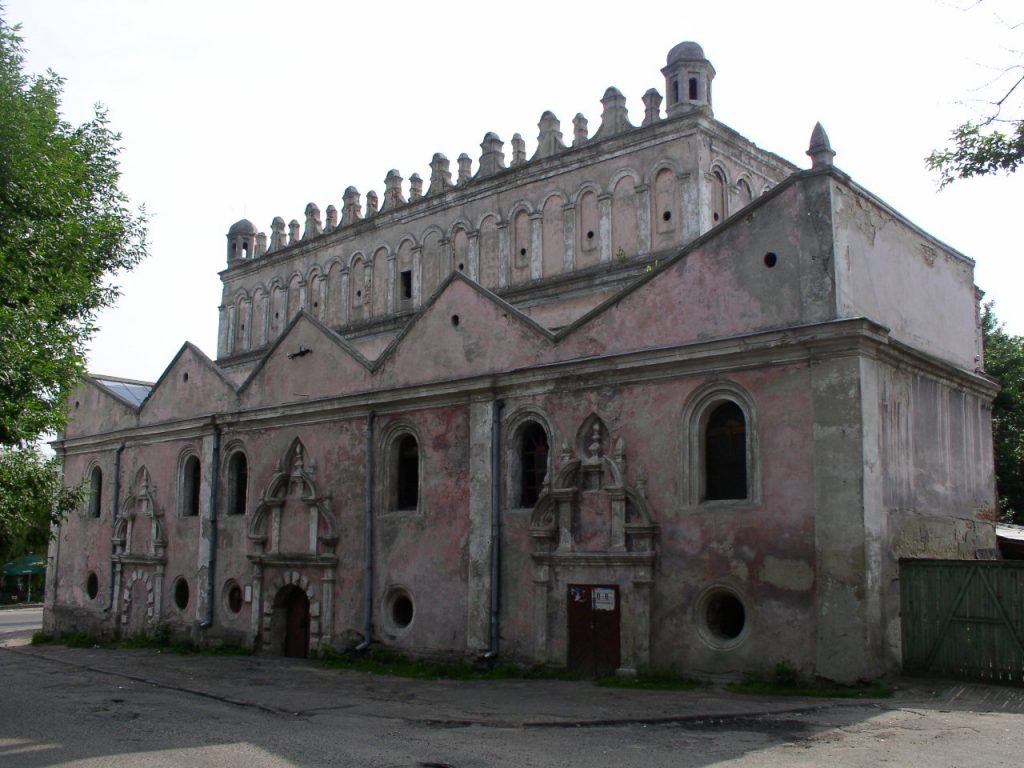
Despite the fact that the synagogue is considered the most valuable of the synagogues in Galicia, if not the whole of Ukraine, it is currently in a state of disrepair and requires urgent reconstruction.
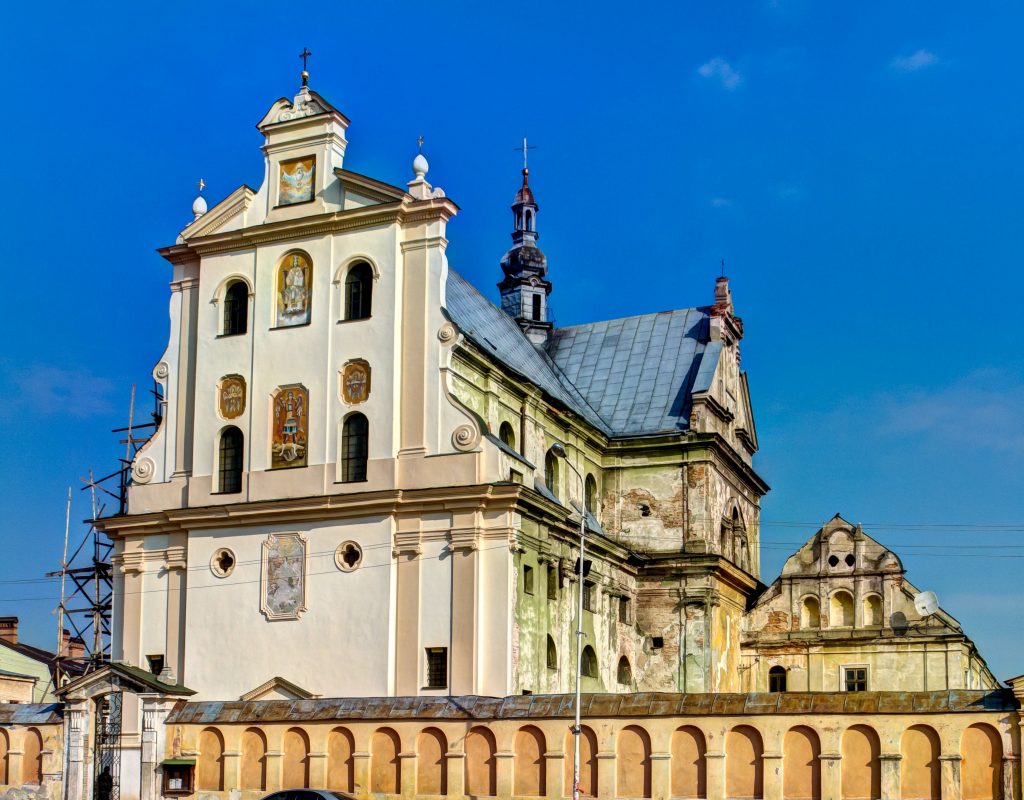
Nearby, there are the walled monastery of the Dominican Fathers (Church of St. Jehoshaphat, 1653-1655) and the Church of the Nativity of the Blessed Virgin (1705).
Outside the central part of the city, there are many interesting antiquities. The monuments to Yevhen Konovalets and the victims of Stalinist repressions, the city park located between the castle and the railway station are worth mentioning. In Zhovkva you can see authentic industrial and manufacturing enterprises, as well as try Zhovkva delicious kvas (brewed soft drink), produced by traditional technology.
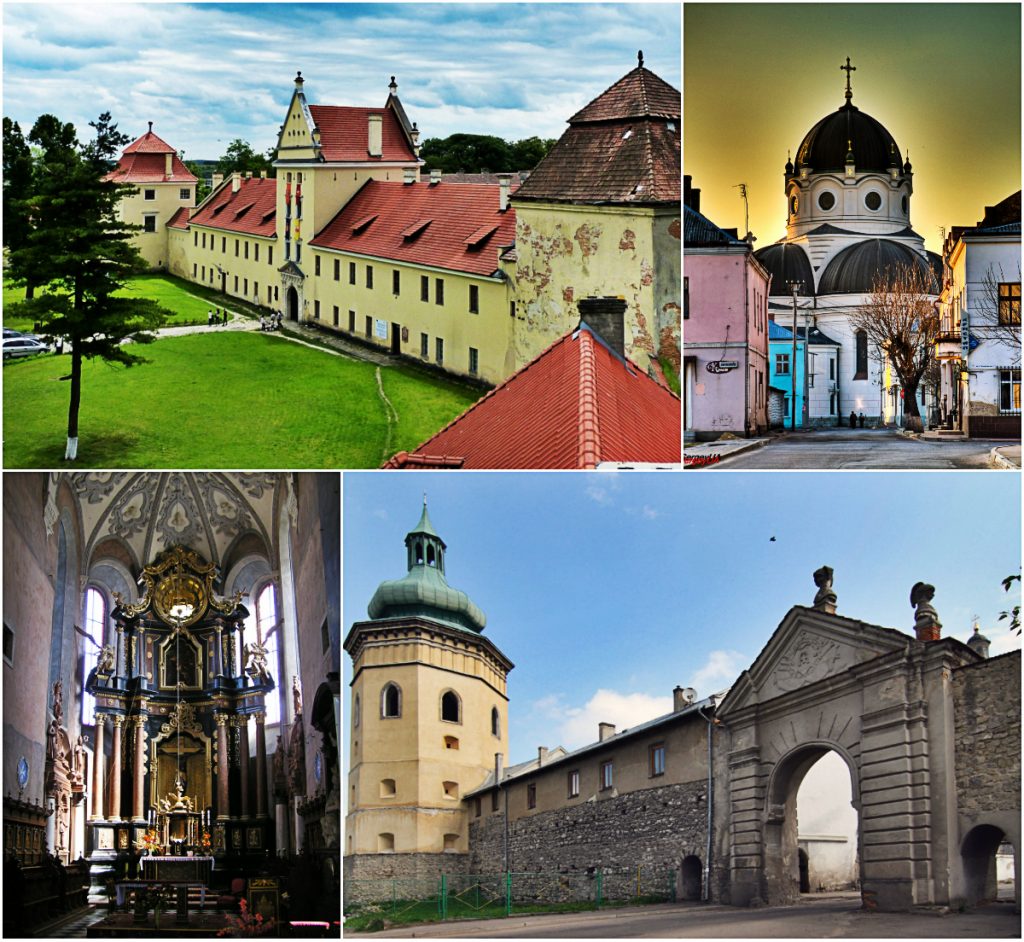
We invite you to visit this charming town and see all its attractions on our tour Zhovkva, Krehiv and Stradch.
Photos used in this article: bruchwiese.livejournal.com, uatravel.pp.uа, 7chudes.in.ua, we.org.ua, plastovabanka.org.ua






